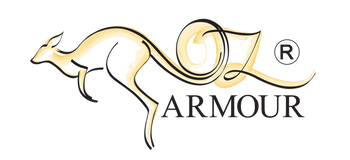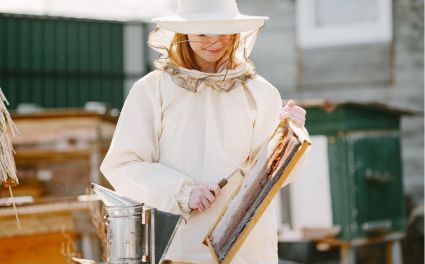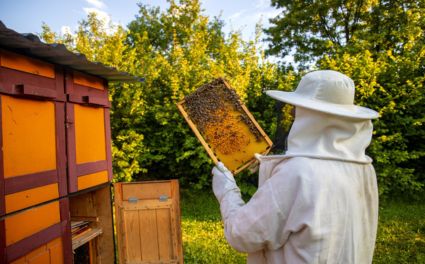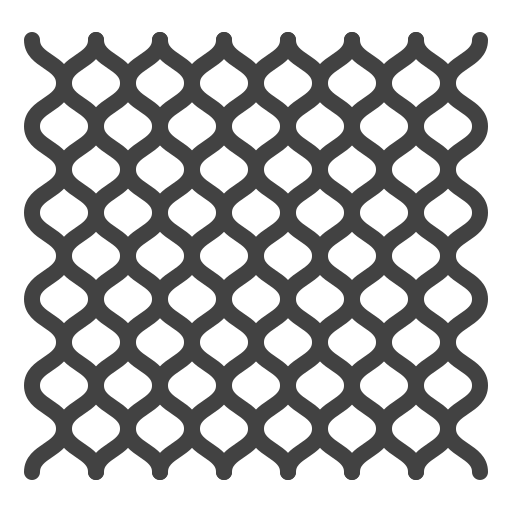Le tarme della cera rappresentano una minaccia significativa per gli apicoltori, causando ingenti danni agli alveari se non vengono tenute sotto controllo. Capire come prevenire i danni causati dalle tarme della cera è fondamentale per mantenere colonie di api sane. Questa guida vi illustrerà le migliori pratiche per identificare, prevenire e gestire le infestazioni da tarme della cera.
Capire le tarme della cera
Ciclo vitale della falena della cera
tarme della cera attraversano diverse fasi del loro ciclo vitale, ognuna delle quali può causare danni all'alveare. Il ciclo vitale inizia con una falena femmina adulta che depone le uova nell'alveare. Una volta schiuse, le larve scavano gallerie nel favo, nutrendosi di cera d'api, polline e altri detriti dell'alveare. Queste gallerie danneggiano la struttura del favo e indeboliscono l'alveare.
Tipi di tarme della cera
Esistono due tipi principali di tarme della cera di cui gli apicoltori devono essere a conoscenza: la tarma maggiore e la tarma minore. Le tarme maggiori sono più grandi e più distruttive, mentre le tarme minori, sebbene più piccole, possono comunque causare danni significativi. Comprendere le caratteristiche e i comportamenti di ciascuna tipologia può aiutare nell'identificazione precoce e nella prevenzione.
Identificazione delle infestazioni di tarme della cera
Segni di infestazione da tarme della cera
La diagnosi precoce è fondamentale per prevenire danni estesi. Cercate segni come ragnatele nel favo, gallerie nella cera e piccole larve che strisciano sui telaini. Potreste anche notare un odore sgradevole proveniente dall'arnia. Le colonie deboli sono particolarmente vulnerabili, poiché non hanno la forza necessaria per difendersi da questi invasori.
Ispezionare gli alveari per le tarme della cera
Ispezionare regolarmente l'arnia è fondamentale per individuare tempestivamente le infestazioni di tarme della cera. Durante le ispezioni, controllate attentamente gli angoli e le fessure dell'arnia dove potrebbero nascondersi le larve. Utilizzate strumenti come una torcia per individuare meglio i potenziali siti di infestazione. Un monitoraggio costante aiuta a intervenire tempestivamente, impedendo alle larve di causare danni estesi.
Misure preventive
Mantenere la pulizia dell'alveare
Mantenere l'arnia pulita è uno dei modi più efficaci per prevenire le infestazioni di tarme della cera. Rimuovete regolarmente i vecchi favi e sostituiteli con quelli nuovi. Assicuratevi di rimuovere tempestivamente eventuali detriti dall'arnia, poiché possono attirare le tarme della cera. Mantenere l'arnia pulita riduce le probabilità che le larve trovino ambienti adatti per proliferare.
Utilizzo di trappole per tarme della cera
Le trappole per tarme della cera possono essere uno strumento utile per la gestione di questi parassiti. Esistono vari tipi di trappole disponibili, come quelle a feromoni che attraggono e catturano le tarme adulte. Posizionate le trappole intorno al vostro apiario e monitoratele regolarmente. Le trappole sono particolarmente utili durante i periodi di massima attività delle tarme della cera, fornendo un ulteriore livello di protezione.
Conservazione corretta delle attrezzature apistiche
La corretta conservazione dell'attrezzatura apistica è essenziale per prevenire i danni causati dalle tarme della cera. Conservare i favi e i telaini non utilizzati in un luogo fresco e asciutto. Si consiglia di congelare i favi prima di riporli per eliminare eventuali uova o larve di tarme della cera. L'utilizzo di contenitori ermetici può anche contribuire a proteggere l'attrezzatura riposta dalle infestazioni.
Metodi di controllo biologico e chimico
Opzioni di controllo biologico
Il controllo biologico prevede l'utilizzo di predatori naturali o organismi utili per controllare le popolazioni di tarme della cera. L'introduzione di predatori come i coleotteri predatori può contribuire a ridurre le larve di tarme della cera.Questo metodo è ecologico e aiuta a mantenere l'equilibrio ecologico all'interno del tuo apiario.
Trattamenti chimici sicuri
Quando le infestazioni diventano gravi, potrebbero essere necessari trattamenti chimici. Utilizzate acaricidi approvati e seguite attentamente le istruzioni del produttore. Sebbene efficaci, è fondamentale assicurarsi che i residui chimici non contaminino il miele o danneggino le api. Optate sempre per trattamenti sicuri sia per l'ambiente che per la vostra colonia.
Gestione dei danni causati dalle tarme della cera
Riparazione dei danni causati dalle tarme della cera
Se rilevi danni causati dalla tarma della cera, intervieni rapidamente per ripararli. Rimuovi i favi colpiti e sostituiscili con altri sani. Pulisci accuratamente i telaini per eliminare eventuali larve o uova rimaste. Una manutenzione regolare aiuta a ripristinare la struttura dell'arnia e a prevenire ulteriori danni.
Rafforzare le colonie di api
Una colonia di api forte ha meno probabilità di essere colpita dalle infestazioni di tarme della cera. Assicuratevi che le vostre api abbiano accesso a un nutrimento adeguato e mantengano una popolazione sana. Monitorate regolarmente la salute dell'alveare e adottate misure per rafforzare la colonia, come ad esempio fornire nutrimento supplementare durante i periodi di magra.

Collezione di tute e guanti da apicoltore OZ Armour
Oltre a gestire i danni causati dalle tarme della cera, è essenziale garantire la sicurezza e il comfort degli apicoltori. OZ Armour offre una collezione premium di "Tuta da apicoltore E Guanti da apicolturaProgettati per la massima protezione. Le nostre tute e guanti per apicoltori offrono una difesa efficace contro le punture d'api, consentendo al contempo la massima libertà di movimento durante le ispezioni degli alveari e la raccolta del miele. Realizzati con materiali resistenti e traspiranti, i nostri guanti e tute garantiscono agli apicoltori comfort e protezione. Che tu sia un apicoltore esperto o alle prime armi, la collezione OZ Armour soddisfa le tue esigenze, garantendo la tua sicurezza e migliorando la tua esperienza di apicoltura.
Conclusione
Prevenire i danni causati dalle tarme della cera è fondamentale per mantenere colonie di api sane. Conoscendo il ciclo vitale delle tarme della cera, identificando precocemente le infestazioni e implementando misure preventive come il mantenimento della pulizia dell'alveare, l'utilizzo di trappole per tarme della cera e la corretta conservazione dell'attrezzatura apistica, gli apicoltori possono proteggere i propri alveari. Combinare opzioni di controllo biologico con trattamenti chimici sicuri, quando necessario, garantisce una gestione completa delle tarme della cera. Inoltre, l'utilizzo di tute e guanti da apicoltore OZ Armour offre protezione e comfort essenziali, consentendo agli apicoltori di gestire i propri alveari con sicurezza. Con queste buone pratiche, gli apicoltori possono sostenere colonie fiorenti e garantire un'esperienza apistica produttiva.












